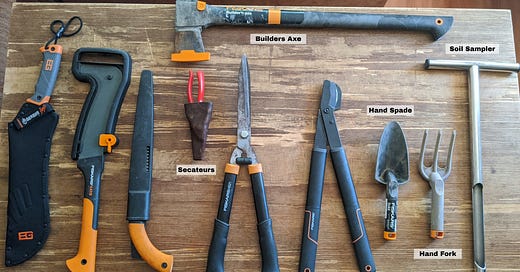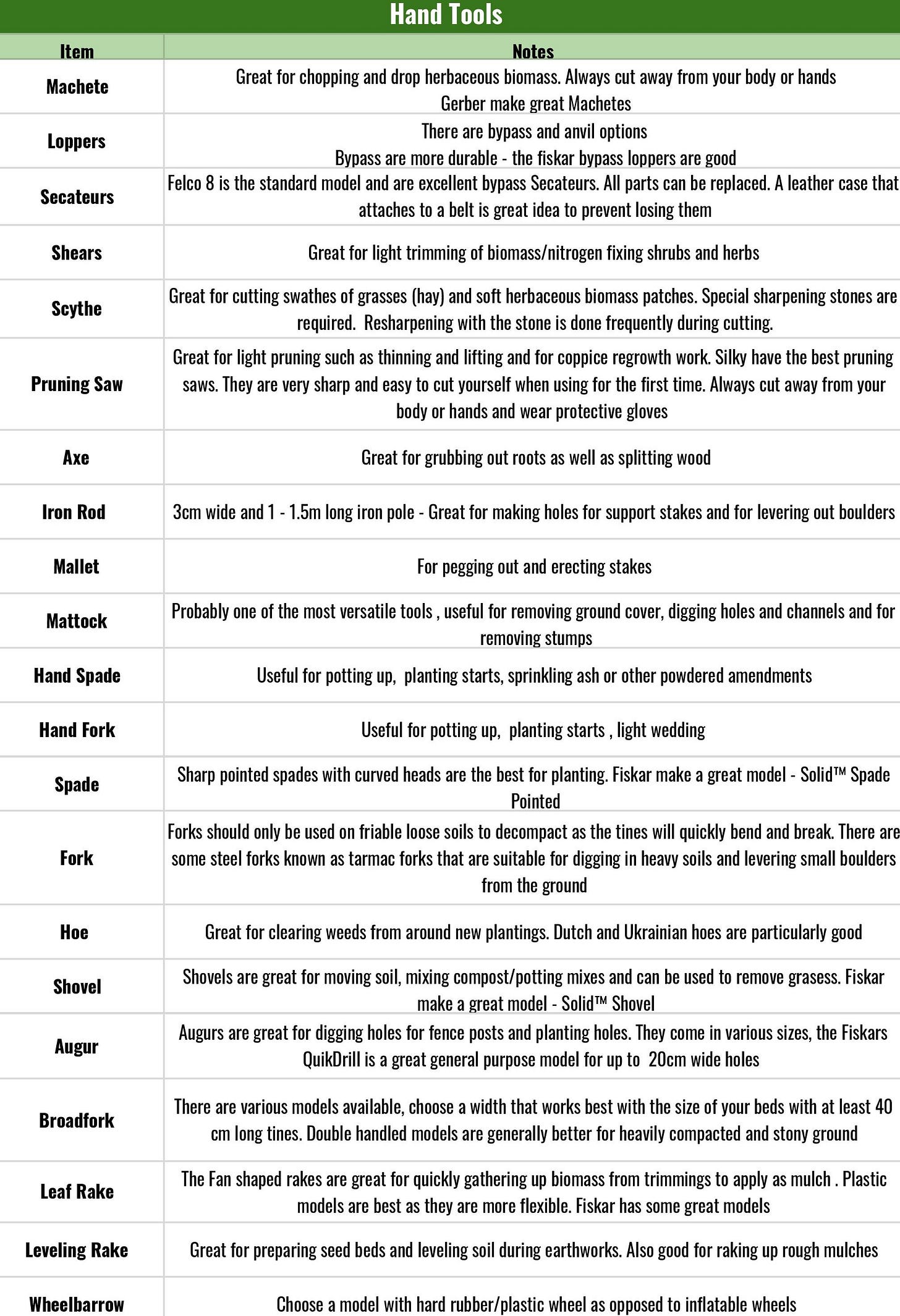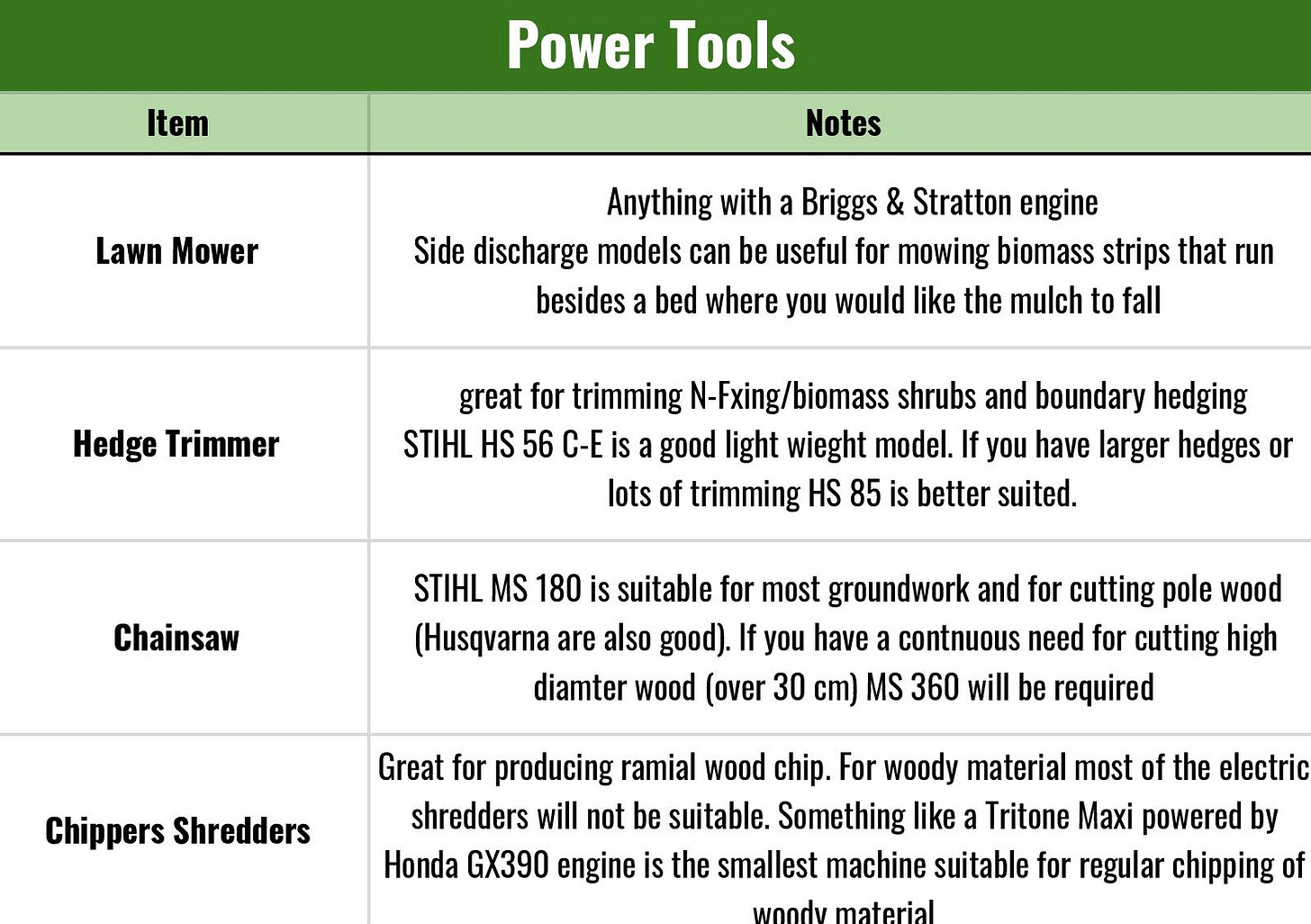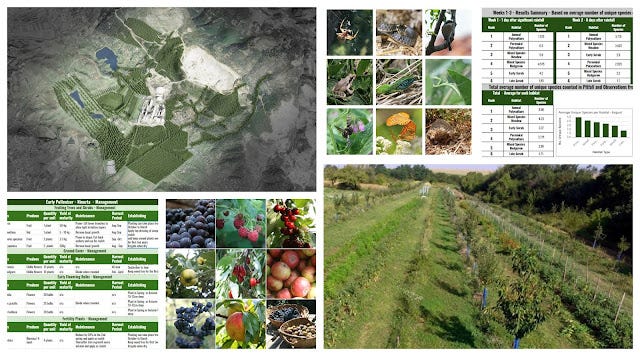Good tools and machinery make all the difference between enjoying a task and doing it well, and begrudgingly doing it badly. Cheap tools and equipment end up being very expensive - they cost you time (with the bad design and low quality build making them more difficult to do a job) and just when you are in the middle of something they’ll break and need replacing. In this section you’ll find a list of the tools that I find most useful when working in the gardens, including hand tools, power tools and other useful equipment. The tools you will need for your site will ultimately depend on how you choose to manage your site, but the following selection covers the majority of needs for small and larger sites.
Hand tools
Many of the hand tools we use are from Fiskars and I can totally recommend their products for general garden tools, although when it comes to pruning tools Silky (www.silkysaws.com) probably make the best saws and Felco (www.felco.com) without doubt make the most excellent secateurs.
Power tools
For chainsaws STIHL are probably the best quality (Husqvarna are also good) and STIHL also have great hedge trimmers. These tools are extremely powerful and if you have not used them before it’s best to be shown how by someone with experience, and wear all of the recommended protective clothing i.e. eye protection, chainsaw trousers, boots, gloves and ear defenders.
Electric battery pack models are now coming to market although they are currently only really suitable for the trimming of very soft herbaceous tissue.
Regarding mowers, you can’t go wrong with anything with a Briggs and Stratton engine. I prefer a light weight push model with a bag to catch the arisings. Self propelled models will make it easier to use but I generally like to mow backwards to give a chance for any wildlife to scatter before the mower comes over. The width of the mower should be considered to make sure it fits the areas you would like to use it in e.g. within the pathways and turning corners. Sharpening the mowing blades when they start to dull will produce a much better cut, make the work easier and reduce fuel consumption considerably.
There are also a range of sit-on mowers for larger areas and for a very large site, flail mower attachments for use with compact utility tractors are the best option.
Regenerative Landscape Design - Online Interactive Course
Want to learn how to design, build and manage regenerative landscapes? Join us on our Regenerative Landscape Design - Online Interactive Course. We look forward to providing you with the confidence, inspiration, and opportunity to design, build and manage regenerative landscapes, gardens, and farms that produce food and other resources for humans while enhancing biodiversity.
You can access the course material at anytime and join the live sessions and interactive forums that run from May - Oct every year. All members of the Bloom Room receive a 500 EUR discount. To take up this offer all you have to do is become an annual subscribers to our Substack and register here with the promo code BLOOM.
I look forward to you joining !
Other useful equipment
The below table lists some other tools and equipment that I find very useful working with in our gardens.
Compact utility tractor
Compact utility tractors are capable of performing similar tasks as larger farm tractors and are very suitable for polyculture landscapes, where maintaining soil integrity is a top priority, as the lighter build reduces compaction of the soil. Compact tractors are equipped with power take-offs (PTOs), three-point hitches and hydraulics, all of which allow the tractors to utilize a variety of tools, equipment and attachments that will often be required for the management of larger sites. These tractors are not suitable for primary tillage such as deep ploughing or sub soiling heavy clay soils.
When selecting a tractor, the following things should be considered:
Max width - the max width of a tractor will often determine the width of the access within a design. The max width of any implements you will use with the tractor should also be considered.
Max height - the height of the tractor should be such that it can fit under any low obstacles that may be a permanent feature of your site, such as low branches, under bridges and the garage roof.
PTO - PTO Horsepower no less than 30 will be able to run all of the needed attachments. If a model is under PTO HP 30, the compatibility of implements and attachments should be considered.
Weight - below 2000kg (including the addition of attachments) will cause minimal compaction, with anything above this weight potentially causing significant damage.
Compatibility with implements - before buying a tractor you should check that the model is compatible with all of the implements you will need.
Reliable spare parts market - it is inevitable that parts will need changing and a reliable source of parts for the machine new or second hand is a must. New brands are particularly risky as they may go out of business and will likely not have an existing second hand market or a lasting stock of new parts.
Locally available servicing and repairs - whatever model you choose, it will be necessary at some point to service the machine and to make repairs. If you do not have the skills to fix your own machines, having a mechanic local to you that has experience will save you time and money in having to send the machine further afield.
Tool maintenance
Having a space allocated for tools with each tool arranged so that it can be accessed without removing other tools will help keep them in good condition, help you keep account of the whereabouts of the tool and is very comfortable to work with. Having the location of the tools in an area that is convenient to collect them and put them back will also be very helpful and should be considered in the design of a site. If you clean your tools after use, especially when they are very dirty, and store them in a dry place, they will likely last for many years. It’s a great idea to schedule in a ‘tools and machinery maintenance’ session every month, along with an inventory check to make sure nothing has been left out. Tractors and other machinery should be serviced according to the manufacturer’s recommendations.
Support Our Project
If you appreciate the work we are doing you can show your support in several ways.
Become a member of the Bloom Room. A $70 annual subscription to our Substack provides you with access to live sessions, design tutorials, a members forum and more, see details here.
Make a purchase of plants or seeds from our Nursery or Online Store
Joining us for one of our Practical Courses or Online Courses
Comment, like, and share our content on social media.
We offer a diversity of plants and seeds for permaculture, forest gardens, and regenerative landscapes including a range of fruit and nut cultivars. We Deliver all over Europe from Nov - March. - Give a happy plant a happy home :)
Welcome to our Online Store where you can find Forest Garden/ Permaculture plants, seeds, bulbs, and Polyculture multi-packs along with digital goods and services such as Online Courses, Webinars and eBooks. We hope you enjoy the store and find something you like. It's your purchases that keep our Project going.
You can also find our full list of trees. shrubs and herbs for forest gardens on our nursery website.














Hi Paul
Good article and advice on tools, etc. you should add a Zubat saw to your pruning tools. I have a Silky for smaller limbs, but use the Zubat for the larger jobs. Most of the tree guys I know use a Zubat, which the consider to be as useful as a chainsaw, without the annoyance of a motor. Full safety gear is mandatory with the Zubat.